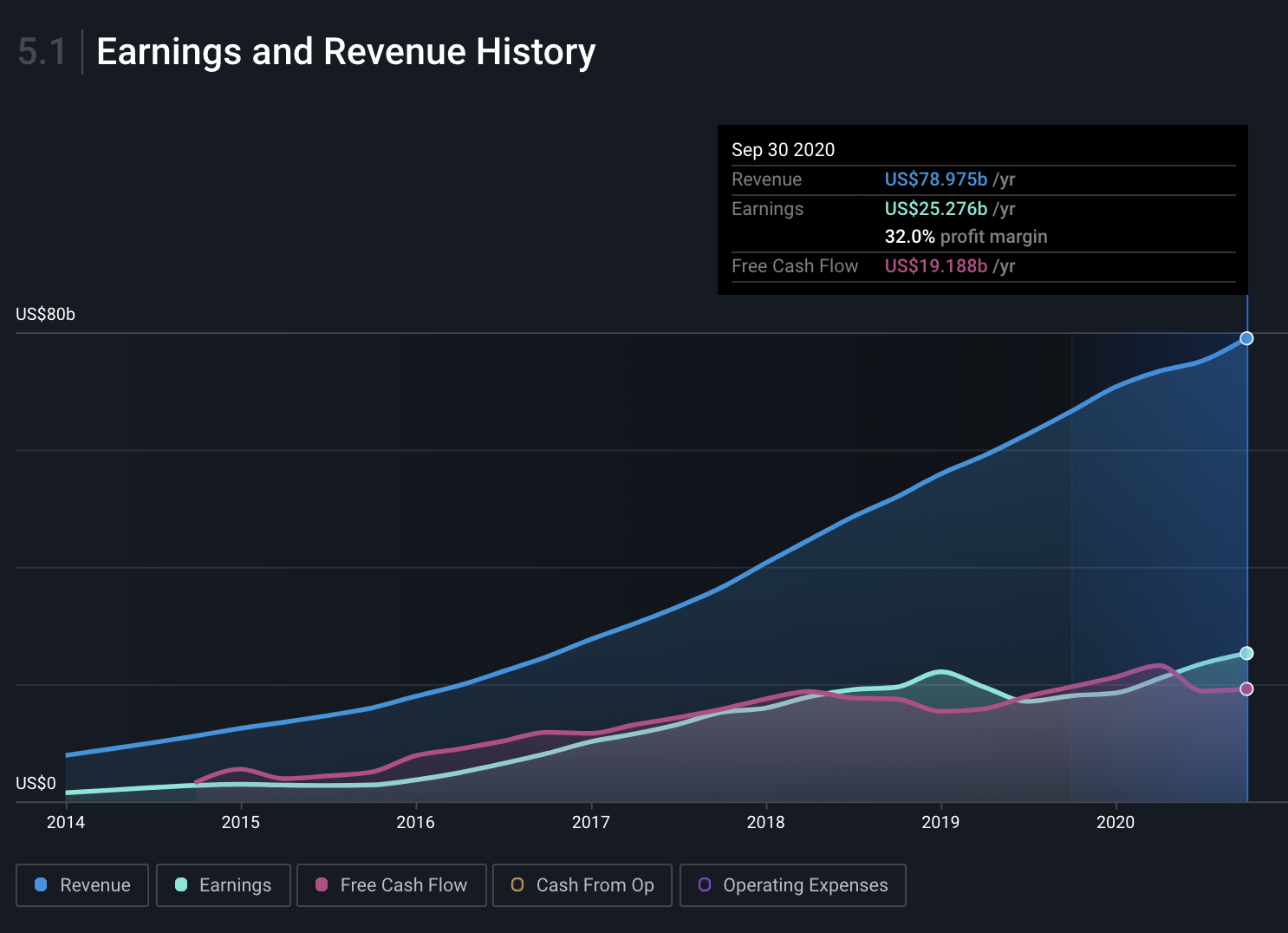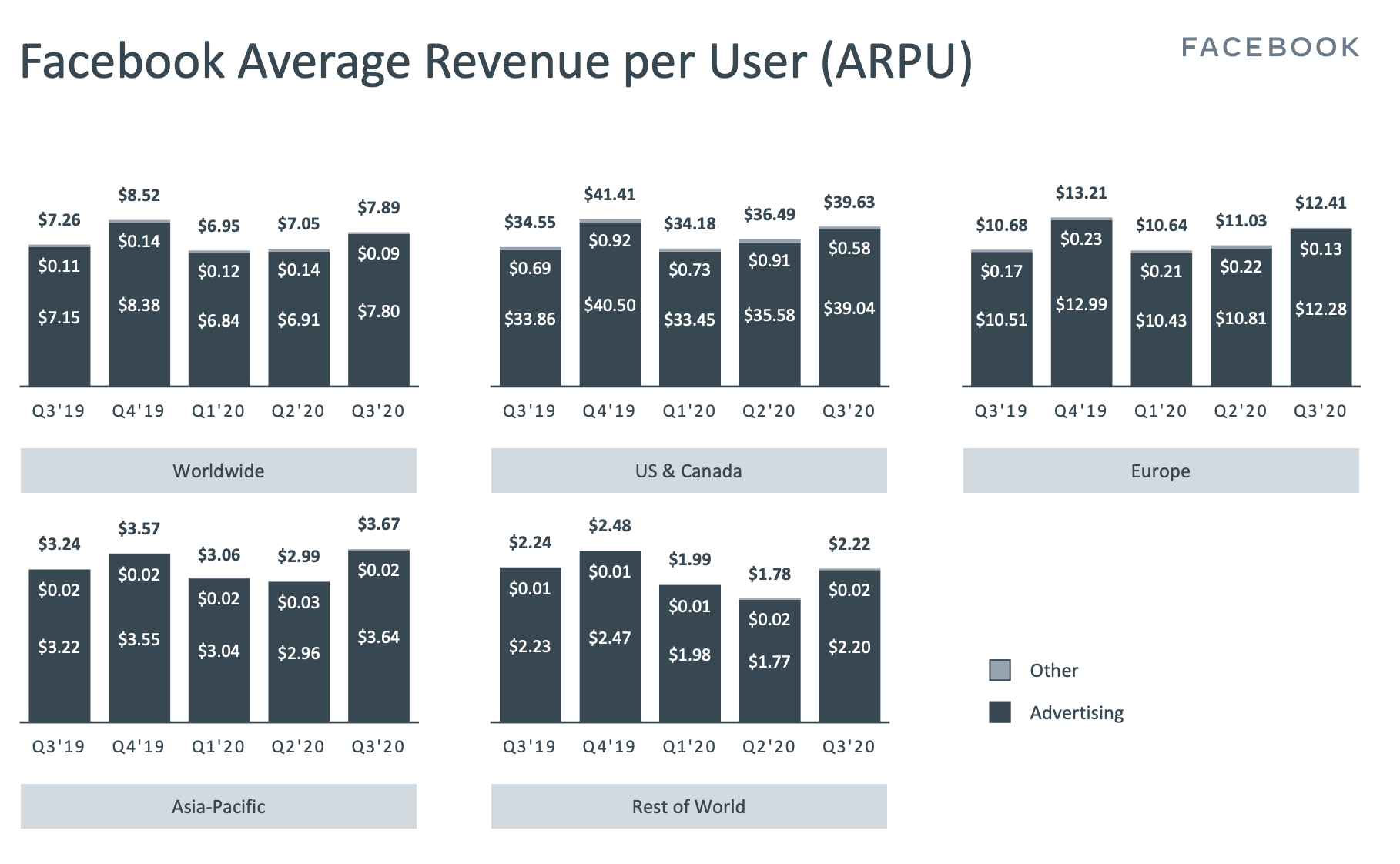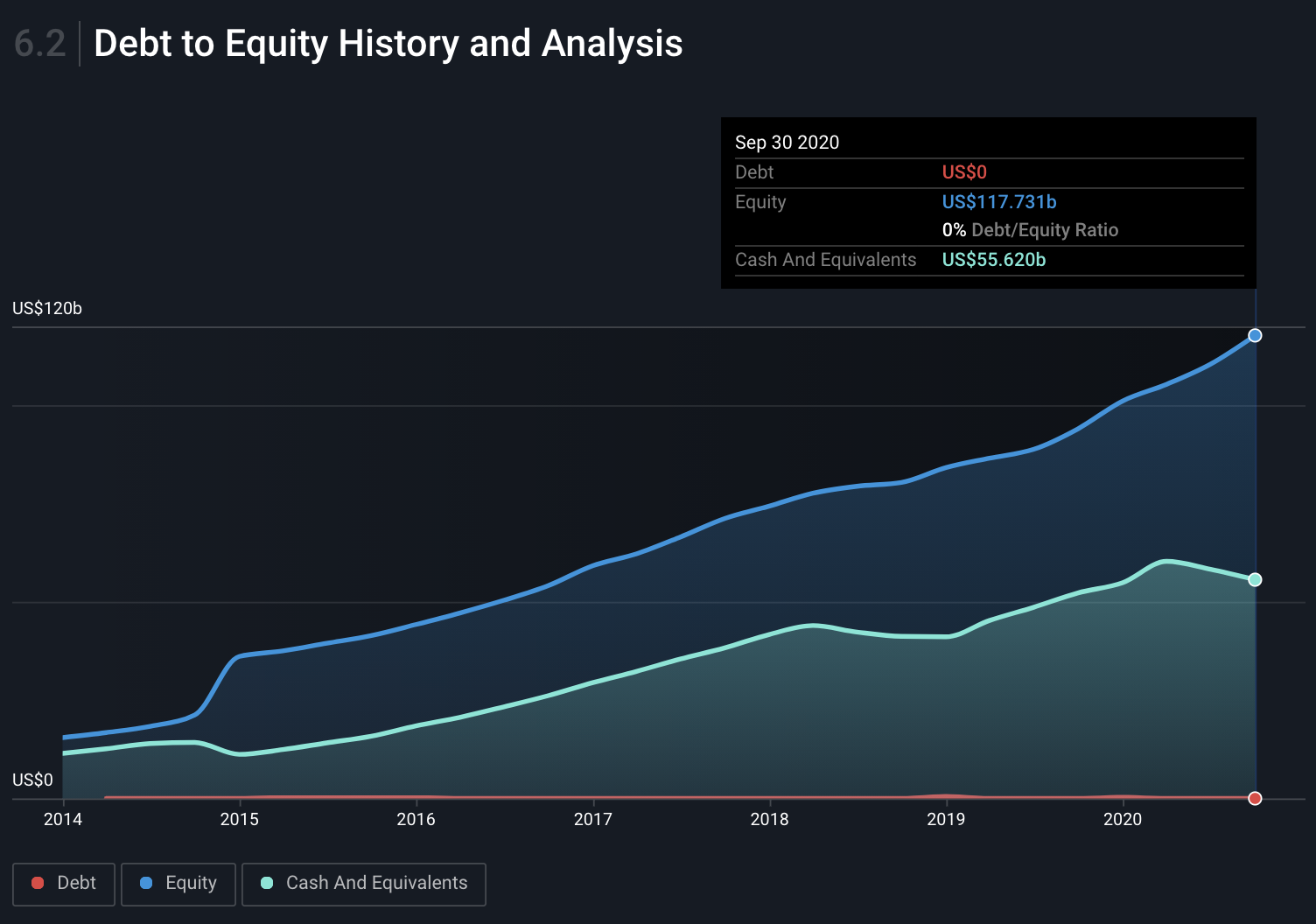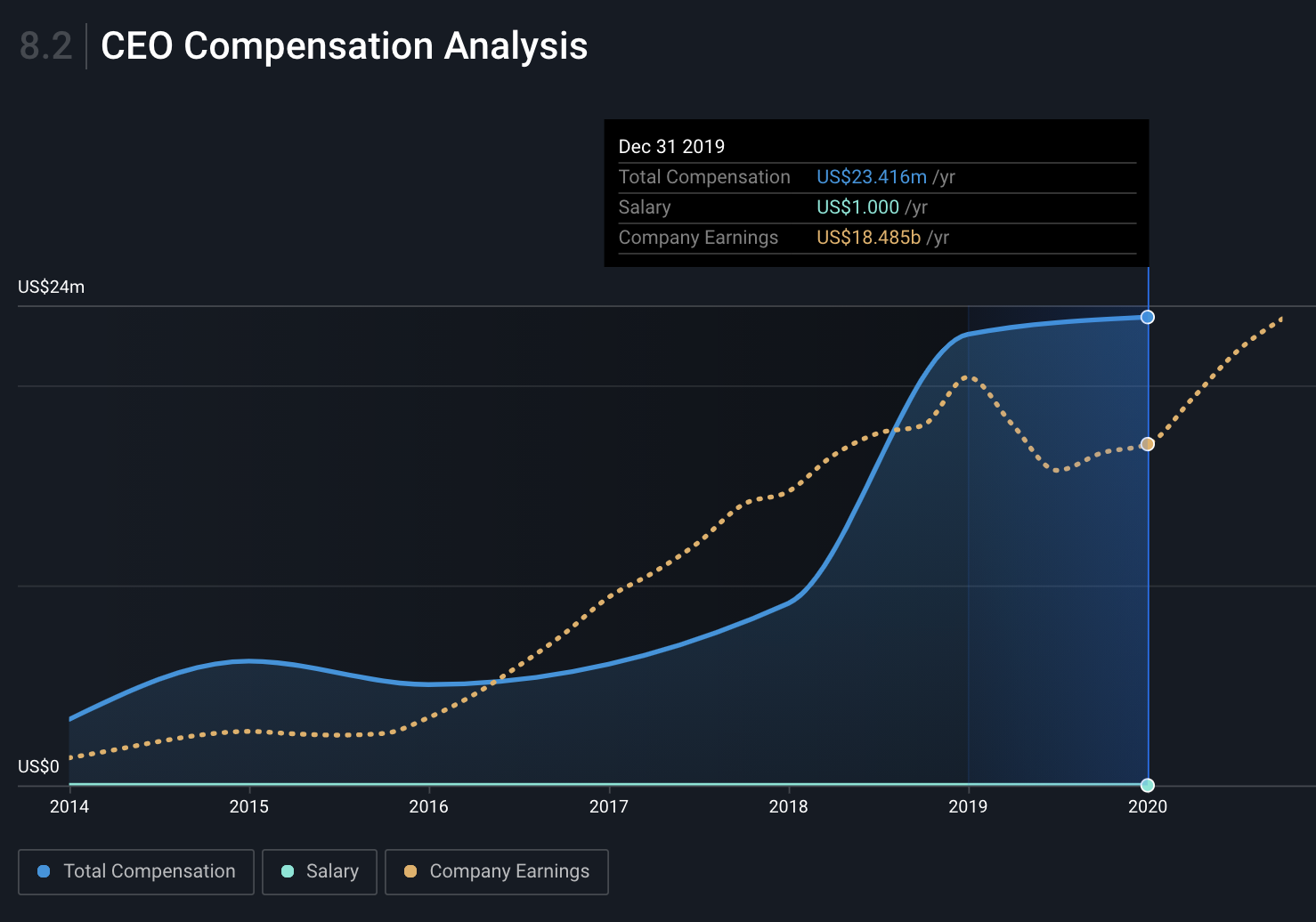By Michael Paige
For us as investors, it’s best to look at any investment from a fundamentals perspective, rather than relying on emotions or the opinions of others. We want to look at a few things such as how well the business operates in its market, how profitable it is, if it is in a good financial position, how aligned management is with shareholder’s interests and what the risks are.
We’ve applied this framework to Facebook ( NASDAQ:FB ) and here’s what we’ve found.
The business and its market
The Facebook platform alone (excluding the likes of Facebook Messenger, Instagram, Whatsapp) has 2.7 billion monthly active users (MAU’s). To put that into perspective, there are 7.8 billion people on the planet, but only 4.9 billion of them are estimated to be internet users. So if you exclude the 1.4 billion from China (since Facebook is banned there), that leaves the company with 3.5 billion people in its addressable market. With 2.7 billion MAU’s that means it has 77% of the market. So it’s clearly sitting in a dominant position.
Add the 2 billion Whatsapp users, 1.3 billion Facebook Messenger users and 1.1 billion Instagram users, and you start to see the reach this company has. While some users may have all 3 apps, it still gives you an insight into just how many people Facebook can reach. Since all of Facebook’s platforms are free to use, the primary way of monetizing its reach is digital advertising.
This form of monetization has been the company’s cash producing machine and provides around 98% of Facebook’s total revenue. Additionally, the trend of digital advertising is expected to continue growing. Total global digital ad spending in 2017 was USD $252 billion, it’s currently $346 billion in 2020 and is expected to reach $470 billion in 2025.
We can see from the chart below that Facebook is gaining market share in terms of these digital advertising dollars as well. In 2017, it accounted for 10% of this global digital ad spending, in 2020, it was 22% and in 2025, it’s predicted to be 35%. So we’re seeing a large shift of digital advertising dollars being directed towards Facebook and its platforms. 
NASDAQ:FB - Earnings and Revenue History to September 30 2020
With that in mind, Facebook generates a significant amount of revenue per user in its more mature markets, and its less mature markets are likely to follow suit, given the above trend. Currently, in North America, its most mature market, the company generated $39.04 Average Revenue Per User (ARPU) in Q3 2020.
Compared with less mature markets, like Europe and Asia Pacific, where it generated $12.41 and $3.67 in ARPU respectively, and there appears to be substantial potential to grow in these markets, even if they don’t reach the US levels.

Source: Facebook Q3 2020 Results Presentation
Are the financials any good?
So next we want to consider the financials. Facebook has a vast network effect in terms of its audience and user base, but how efficiently does the company operate to generate a profit? The answer is: extremely well.
To learn this we can look at the company’s net profit margins, which are some of the best in class. In the Earnings and Revenue chart above from our company report, you can see that Facebook generates net profit margins of 32%.
For us to get a better perspective of how these net profit margins are earned, it’s crucial we are aware of what costs the company needs to incur to generate these returns.
Notably, the biggest costs for Facebook are its Costs of Revenue and Research and Development , which typically make up around 66% of the company’s total operating expenses.
The Cost of Revenue refers to any expenses that are associated with the operations of its data centers and technical infrastructure. The Research and Development expenses are related to items like salaries and share-based compensation for employees on the engineering and technical teams who are responsible for either building new products or improving existing products.
Considering both of these costs have each amounted to roughly 20% of revenue for the last few years, it’s likely that as revenue continues to grow, these costs will expand accordingly. Therefore, it’s fair to assume that all else being equal, Facebook’s net profit margins will likely stay the same.
While looking at debt is usually an important part of researching a company, that would be superfluous here because Facebook is debt-free.

NASDAQ:FB - Debt to Equity History to September 30 2020.
Is management aligned with shareholder’s interests?
When investing in any business, it’s crucial to know when management has skin in the game. For details on this, we have a full breakdown of management alignment in our company report , but there are some other aspects that are worth keeping in mind.
Facebook has Class A and Class B shares. Class B shares hold 10 votes per share and Class A shares hold 1 vote per share. These Class A shares are held by the individual and institutional investors, while the Class B shares are held primarily by Mark Zuckerberg and other executives which help them maintain the majority of voting rights.
This approach means that the management can retain a majority of the voting power in the company despite not owning a majority of the shares. This can make it very hard for most shareholders to have a say in how the company is run.
What are the risks?
Every company faces risks, and Facebook is no exception. So part of a solid investment process involves identifying them and determining how dangerous they are to a company’s prospects and determining the likelihood of them happening.
We’ve identified a few business-specific risks in our company report , but from a macro point of view, we think there are a few main things to be aware of. They are regulation, cybersecurity, and key personnel risk. We won’t go too in-depth here, but each one poses a specific risk to the company’s prospects, should they occur.
In regards to regulation, Facebook has been in the spotlight of many governments around the world, including the US and Europe. Its policy on data collection has many concerned and these governments will likely try to take some measures to regulate Facebook’s actions. Depending on the severity, this could impact the company’s earnings because its data for advertisers may be less precise. (* Update - On 12/9/2020 The US FTC and 48 US states have filed antitrust lawsuits against FB)
In terms of cybersecurity, social media companies store billions of pieces of data, and these include personal data. Should Facebook be hacked, it could pose a large risk, not only financially, but in terms of Facebook’s reputation as well.
As for the key personnel risk, this is very real at Facebook. Mark Zuckerberg has been at the helm since day one, and we’d argue that he is heavily responsible for a lot of the company’s successful acquisitions, strategies, and decisions (think Instagram acquisition). Should he leave, or no longer be CEO for whatever reason, it remains to be seen if he would be replaced by someone equally capable.
Below is a chart of Mark’s compensation against the company’s earnings.

NASDAQ:FB - CEO Compensation Analysis to 31 December 2019
Finally, it would be remiss to exclude risks from third parties. For example, Apple recently released iOS14, which includes some new privacy features. These features will allow users to decide whether they want their IDFA tracked by apps. This IDFA code (which is unique to each Apple device) has been used by Facebook to deliver tailored ads to users on third-party apps that choose to use Facebook’s Audience Network. Unfortunately, Facebook has never really disclosed how much its Audience Network business generates in terms of revenue, so it’s hard to place a dollar value on it, but Facebook has said the iOS14 changes would cut this type of revenue in half.
Facebook’s fundamentals overall
When we look at Facebook’s fundamentals, it shapes up to be a strong company. It’s the dominant player in its field, it’s continuing to gain market share of the digital ad spending space, it has strong net profit margins, a flawless balance sheet, and it operates in a growing industry. Since it already has 77% of the addressable user market, it worth investigating the company’s other monetization strategies, because it appears somewhat reliant on this digital advertising. In terms of the risks the company faces, they each pose a different challenge but it remains to be seen how severe they would be. So by ignoring the noise and focusing on the company’s fundamentals, Facebook looks quite appealing.
The last step to understanding Facebook is getting a good valuation, and we’ve collated the future cash flow forecasts of the 45 analysts covering Facebook and generated a fair value estimate for the business. You can find our estimated valuation on Facebook’s company report page .
Neither Simply Wall St analyst Michael Paige nor Simply Wall St holds any position in Facebook Inc. Michael Paige does hold a position in Apple Inc. This article is general in nature. It does not constitute a recommendation to buy or sell any stock and does not take account of your objectives, or your financial situation. We aim to bring you long-term focused analysis driven by fundamental data. Note that our analysis may not factor in the latest price-sensitive company announcements or qualitative material.
Have feedback on this article? Concerned about the content? Get in touch with us directly. Alternatively, email editorial-team@simplywallst.com
The views and opinions expressed herein are the views and opinions of the author and do not necessarily reflect those of Nasdaq, Inc.


